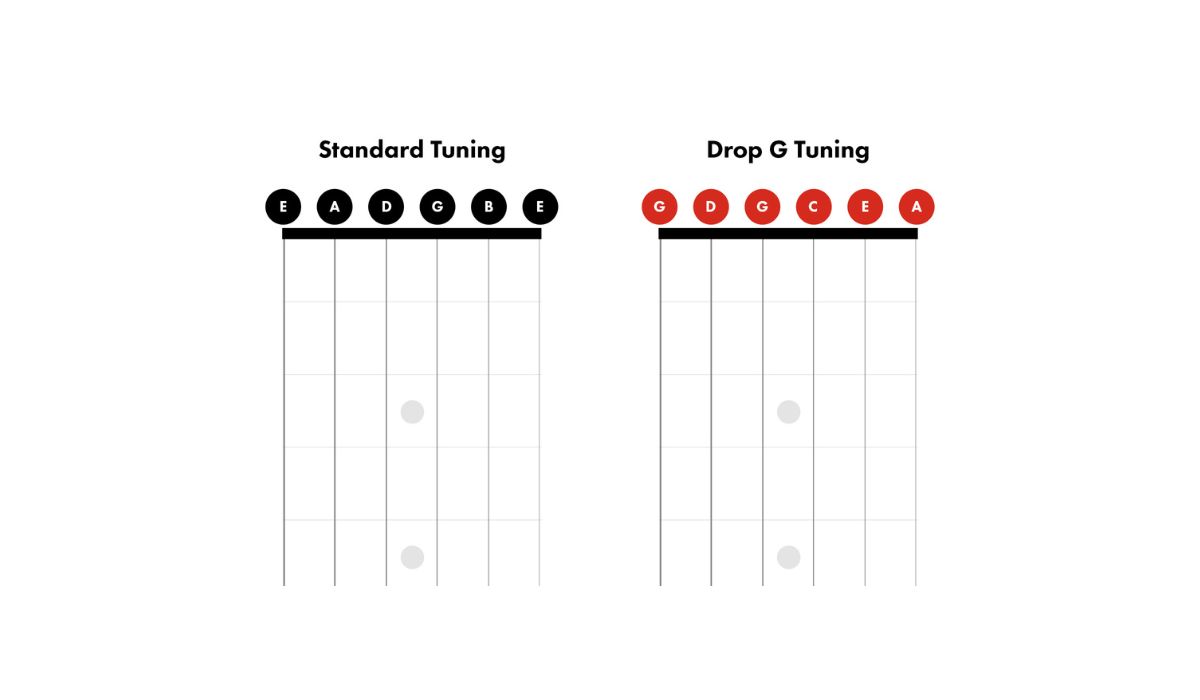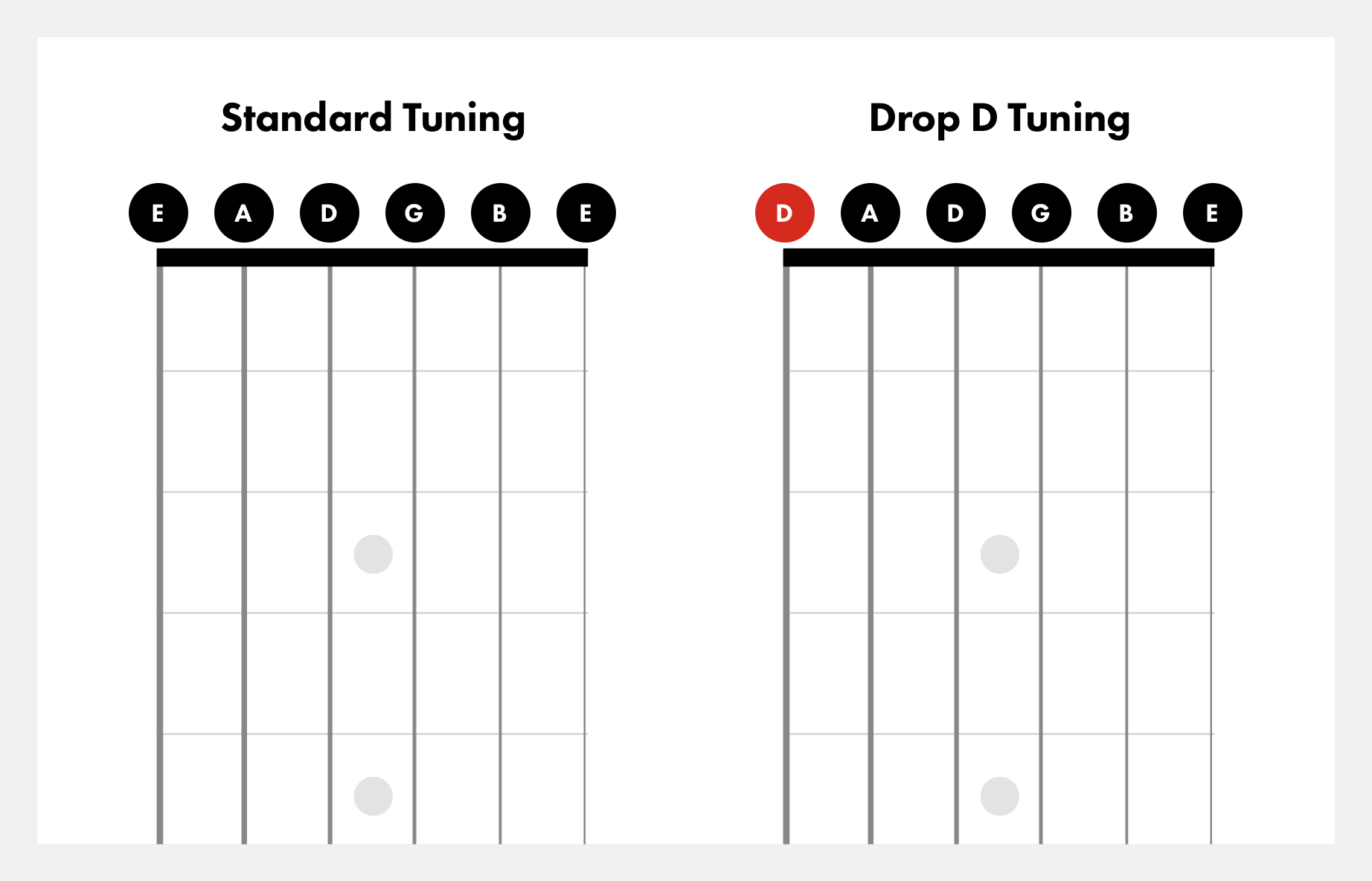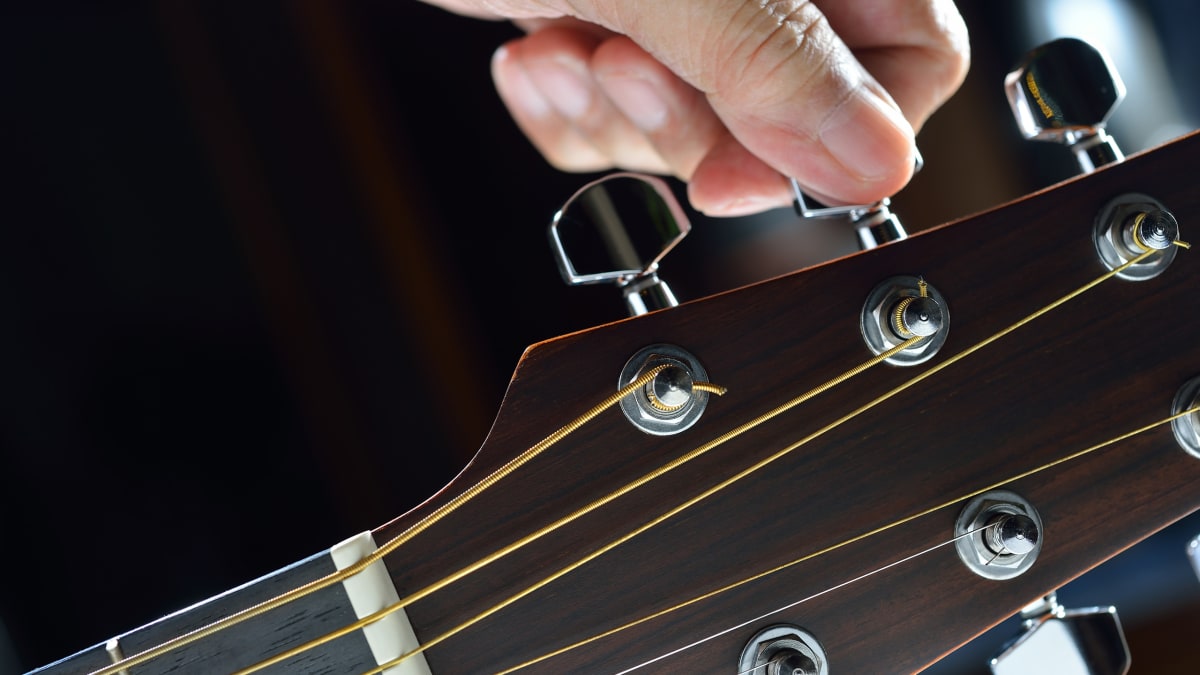Home>Instruments>Guitar>What Is The Standard Tuning For A Guitar


Guitar
What Is The Standard Tuning For A Guitar
Published: February 15, 2024
Learn about the standard tuning for a guitar and how to tune your instrument for optimal sound quality. Discover the best practices for tuning a guitar and maintaining its pitch.
(Many of the links in this article redirect to a specific reviewed product. Your purchase of these products through affiliate links helps to generate commission for AudioLover.com, at no extra cost. Learn more)
Table of Contents
- Understanding the Importance of Guitar Tuning
- Exploring the Fundamental Principles of Guitar Tuning
- Unveiling the Timeless Configuration of Standard Guitar Tuning
- Unlocking the Musical Advantages of Standard Guitar Tuning
- Navigating the Path to Harmonious Alignment
- Harmonizing Tradition and Innovation in Guitar Tuning
Introduction
Understanding the Importance of Guitar Tuning
The art of playing the guitar is deeply intertwined with the concept of tuning. Whether you are a seasoned musician or a novice enthusiast, the significance of achieving the perfect tuning cannot be overstated. Tuning a guitar involves adjusting the tension of the strings to produce the desired pitches, ensuring that each string resonates harmoniously with the others. This fundamental aspect directly influences the overall sound and playability of the instrument.
Guitar tuning is a crucial foundation for musicians, as it directly impacts the quality of the music produced. A well-tuned guitar not only enhances the tonal clarity and resonance but also contributes to the player's overall experience, allowing for seamless chord transitions and effortless melodic progressions. Understanding the standard tuning for a guitar serves as a gateway to unlocking a world of musical possibilities, enabling players to explore diverse genres and styles with confidence.
The standard tuning for a guitar forms the basis for countless musical compositions and arrangements, serving as a universal reference point for musicians across various genres. Whether you are delving into the realm of rock, blues, jazz, or classical music, the standard tuning provides a common ground for musical expression and creativity. This shared framework facilitates seamless communication among musicians and simplifies the process of learning and performing music across different platforms.
In the subsequent sections, we will delve deeper into the intricacies of guitar tuning, shedding light on the standard tuning for a guitar and its myriad benefits. By understanding the nuances of standard tuning and its impact on musical expression, you will embark on a journey that transcends technicality, embracing the profound artistry and emotional depth inherent in the world of guitar playing.
Overview of Guitar Tuning
Exploring the Fundamental Principles of Guitar Tuning
Guitar tuning encompasses the process of adjusting the strings to specific pitches, thereby establishing the foundational framework for musical expression. The standard tuning for a guitar, in its most prevalent form, involves tuning the six strings to the pitches E, A, D, G, B, and E, from the lowest string to the highest. This configuration enables players to create a diverse range of chords, scales, and melodic sequences, laying the groundwork for versatile and expressive musical performances.
Understanding the concept of pitch is crucial in the context of guitar tuning. Each string is tuned to resonate at a specific frequency, dictating the perceived pitch when plucked or strummed. The relationship between the strings’ tension and length determines the pitch produced, with higher tension yielding higher pitches and vice versa. By meticulously adjusting the tension of each string, musicians can achieve the desired pitches, harmonizing the individual strings to create a cohesive and melodious ensemble.
It is important to note that guitar tuning is not limited to standard tuning alone. Various alternative tunings exist, offering unique sonic possibilities and enriching the guitarist’s repertoire. Open tunings, for instance, involve tuning the strings to form a chord when strummed open, fostering rich harmonic textures and facilitating fluid chord transitions. Additionally, drop tunings and modal tunings provide avenues for exploring unconventional tonal landscapes, inspiring creativity and innovation in musical composition and performance.
Moreover, the advent of electronic tuners has revolutionized the process of guitar tuning, providing precise and convenient methods for achieving optimal pitch accuracy. These devices analyze the frequency of the strings’ vibrations, guiding musicians in fine-tuning their instruments with unparalleled precision. Whether through traditional methods or modern technological aids, the art of guitar tuning remains a cornerstone of musical craftsmanship, embodying the fusion of technical precision and artistic expression.
As we delve deeper into the standard tuning for a guitar and its inherent advantages, it is essential to recognize the profound impact that tuning exerts on the sonic tapestry of musical compositions. By mastering the principles of guitar tuning, musicians embark on a transformative journey that transcends technicality, nurturing a profound connection between instrument, player, and audience.
Standard Tuning for a Guitar
Unveiling the Timeless Configuration of Standard Guitar Tuning
The standard tuning for a six-string guitar, often referred to as EADGBE tuning, has stood the test of time as the quintessential tuning configuration embraced by guitarists worldwide. This iconic arrangement dictates the pitches of the open strings, serving as the foundational template for countless musical compositions and performances across diverse genres and styles.
At its core, standard tuning entails tuning the six strings of the guitar to the following pitches, from the lowest string to the highest:
- E – the lowest and thickest string
- A
- D
- G
- B
- E – the highest and thinnest string
This harmonious sequence of pitches empowers guitarists to navigate the instrument’s fretboard with fluidity and precision, facilitating the seamless execution of chords, scales, and melodic passages. The symmetry and balance inherent in standard tuning contribute to the instrument’s versatility, allowing for the effortless exploration of diverse musical expressions and harmonic landscapes.
One of the defining characteristics of standard tuning is its inherent adaptability to various playing styles and musical genres. Whether delving into the realm of rock, blues, jazz, country, or classical music, the standard tuning provides a common foundation for musical exploration, enabling musicians to transcend stylistic boundaries and harness the instrument’s full potential.
Furthermore, the symmetrical nature of standard tuning fosters a deep understanding of music theory and fretboard navigation, empowering guitarists to unravel the intricacies of chord voicings, scale patterns, and interval relationships. This comprehensive grasp of musical fundamentals serves as a catalyst for creative expression, emboldening players to craft intricate compositions and deliver captivating performances with confidence and proficiency.
While alternative tunings offer compelling avenues for sonic experimentation, the enduring legacy of standard tuning endures as a timeless cornerstone of guitar playing. Its universal resonance and adaptability underscore its significance as a unifying force in the musical landscape, transcending cultural and stylistic boundaries to unite guitarists in a shared language of harmonic expression.
Embracing the standard tuning for a guitar is akin to embracing a rich heritage of musical tradition and innovation, embarking on a journey that intertwines technical mastery with boundless creativity. As we delve into the intricacies of standard tuning, we unravel a tapestry of harmonic possibilities that resonate with the essence of musical artistry.
Benefits of Standard Tuning
Unlocking the Musical Advantages of Standard Guitar Tuning
The standard tuning for a guitar, with its timeless configuration and versatile sonic palette, offers a myriad of benefits that resonate deeply with musicians across the globe. This iconic tuning layout serves as a cornerstone for musical exploration, providing an array of advantages that enrich the playing experience and empower guitarists to unleash their creative potential.
1. Versatility and Familiarity: Standard tuning’s widespread adoption and universal familiarity make it a versatile platform for musical expression. Its prevalence across diverse genres enables guitarists to seamlessly transition between musical styles, leveraging a shared framework that fosters adaptability and fluency in performance.
2. Intuitive Fretboard Navigation: The symmetrical arrangement of standard tuning facilitates intuitive fretboard navigation, empowering guitarists to visualize chord shapes, scale patterns, and melodic sequences with clarity and precision. This comprehensive understanding of the instrument’s layout enhances playing dexterity and improvisational prowess.
3. Harmonic Richness: Standard tuning’s balanced configuration engenders harmonic richness, allowing for the seamless interplay of chords and melodic passages. The harmonious resonance of open strings and the cohesive integration of fretted notes contribute to a lush and resonant sonic tapestry, elevating the expressive potential of the instrument.
4. Educational Foundation: Standard tuning serves as an educational foundation, providing a fundamental framework for learning music theory, chord structures, and scale relationships. Its consistent layout fosters a deep understanding of musical concepts, nurturing a solid groundwork for musical growth and exploration.
5. Cross-Genre Compatibility: The adaptability of standard tuning transcends genre boundaries, offering a common ground for musicians to collaborate and communicate. Whether engaging in rock, blues, jazz, or classical music, the universal language of standard tuning facilitates seamless musical interaction and creative exchange.
6. Pedagogical Utility: Standard tuning’s pedagogical utility extends to music education, simplifying the process of teaching and learning the guitar. Its structured layout and harmonic resonance make it an ideal starting point for aspiring guitarists, providing a foundational platform for skill development and musical exploration.
Embracing the benefits of standard tuning for a guitar entails embracing a rich heritage of musical tradition and innovation. Its enduring legacy as a unifying force in the musical landscape underscores its significance as a catalyst for artistic expression and creative exploration. As we unravel the advantages of standard tuning, we unveil a tapestry of harmonic possibilities that resonate with the essence of musical artistry.
How to Tune a Guitar to Standard Tuning
Navigating the Path to Harmonious Alignment
Tuning a guitar to standard tuning is a fundamental skill that empowers musicians to unlock the instrument’s full potential and embark on a sonic journey characterized by clarity and resonance. Whether utilizing a digital tuner, tuning fork, or relying on the traditional method of tuning by ear, the process of achieving standard tuning entails meticulous attention to detail and a keen ear for pitch accuracy.
1. Utilizing a Digital Tuner: Modern digital tuners offer a convenient and precise method for tuning a guitar to standard tuning. By plucking each string and observing the tuner’s display, musicians can adjust the tuning pegs to align the strings with the designated pitches: E, A, D, G, B, and E, from the lowest to the highest string. The tuner provides real-time feedback, guiding players toward optimal pitch accuracy with ease and efficiency.
2. Leveraging a Tuning Fork: Tuning forks provide a traditional yet reliable means of achieving standard tuning. By striking the tuning fork and placing it in proximity to the guitar’s soundhole, musicians can tune the sixth string (E) to the fork’s designated pitch. Subsequently, they can utilize the intervals of perfect fifths to tune the remaining strings, aligning each string’s pitch with the harmonics produced by the previously tuned strings.
3. Tuning by Ear: Tuning a guitar by ear demands a discerning ear for pitch and a deep familiarity with the sonic characteristics of each string. By referencing a reliable pitch source, such as a piano, pitch pipe, or another tuned instrument, musicians can tune the guitar’s strings to the corresponding pitches of standard tuning, relying on their auditory acuity to achieve precise alignment.
4. Fine-Tuning and Verification: Regardless of the tuning method employed, it is essential to fine-tune each string to ensure optimal pitch accuracy. After initially aligning the strings to the standard tuning pitches, players should verify the harmonic resonance and tonal clarity, making subtle adjustments as needed to achieve a harmonious and balanced sound across all strings.
Mastering the art of tuning a guitar to standard tuning is a transformative journey that cultivates a deep connection between musician and instrument. By honing this foundational skill, guitarists embark on a path characterized by sonic precision, expressive resonance, and the boundless potential for musical exploration. As the strings align with the frequencies of standard tuning, a harmonious convergence unfolds, paving the way for captivating performances and immersive musical experiences.
Conclusion
Harmonizing Tradition and Innovation in Guitar Tuning
The exploration of standard tuning for a guitar transcends the technical nuances of pitch alignment, resonating with the essence of musical artistry and creative expression. As we unravel the timeless configuration of EADGBE tuning and its profound impact on the sonic landscape of musical compositions, we embark on a journey that intertwines tradition and innovation, forging a harmonious synergy between the past and the present.
Standard tuning stands as a beacon of versatility and familiarity, offering a universal platform for musical exploration that transcends genre boundaries and unites guitarists in a shared language of harmonic expression. Its symmetrical layout fosters intuitive fretboard navigation and harmonic richness, empowering musicians to craft intricate compositions and deliver captivating performances with confidence and proficiency.
Moreover, the pedagogical utility and cross-genre compatibility of standard tuning underscore its significance as an educational foundation and a catalyst for musical collaboration. Whether in the context of music education or collaborative endeavors, standard tuning serves as a unifying force that simplifies the process of learning and performing, fostering a sense of interconnectedness and creative exchange among musicians.
As guitarists navigate the path to harmonious alignment, whether through the utilization of digital tuners, tuning forks, or the discerning ear, they embody a profound connection with the instrument, nurturing a deep understanding of its sonic intricacies and expressive potential. The meticulous pursuit of pitch accuracy culminates in a symphonic convergence, where the strings resonate in perfect harmony, inviting players to embark on a sonic journey characterized by clarity, resonance, and boundless creative expression.
Embracing the standard tuning for a guitar is akin to embracing a rich heritage of musical tradition and innovation, where technical precision intertwines with boundless creativity, paving the way for captivating performances and immersive musical experiences. As the strings align with the frequencies of standard tuning, a harmonious convergence unfolds, transcending technicality to embrace the profound artistry and emotional depth inherent in the world of guitar playing.
In the symphony of musical expression, standard tuning serves as a timeless overture, inviting guitarists to embark on a transformative journey characterized by sonic precision, expressive resonance, and the boundless potential for musical exploration. As the chords resonate and the melodies unfold, the legacy of standard tuning reverberates through the annals of musical history, embodying the enduring spirit of creative innovation and harmonic unity.











